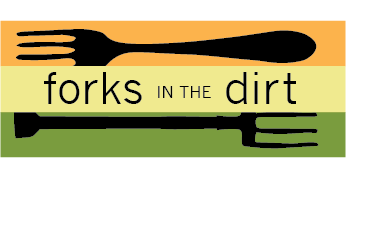
Organic Mulch is the unsung hero of my veggie garden.
Mulch performs garden magic by just lying there looking gorgeous in my garden.
Like a good milk mustache, I see mulch in people’s gardens as an endearing and wholesome quality.
It is one of my secret tools in the garden- I can control so many variables, soil moisture, soil temperature and organic content with an annual addition.
One of the basics of soil health is to ‘keep the soil covered’ and mulch does this and so much more. Specifically, I’m talking about organic mulch, like straw, tree leaves or compost added to the top of the soil (not worked into the soil).

This is a good moment to mention the Law of Return in regard to gardening, which simply reminds us that ‘what comes out of the soil should go back into the soil’.
When we think of how nature grows her gardens, she ensures healthy growth with nutrients and soil life by growing where things are decomposing, and usually under a thick layer of decomposing leaves. We can mimic nature in our own gardens by mulching – one simple way to work towards that balance.
I also like to grow cover crops, usually in the fall, to help keep the soil covered and build soil health. I prefer cover crops that grow quickly and winter kill easily, all while adding nutrients to and improving soil structure.

Water Conservation

Mulch also helps hold moisture in the soil by reducing the sun’s extreme drying effect on bare soil. This drying (we’ve all seen the cracks in summer scorched soil) adds to compaction and decreased air and water being able to reach plant roots. If your main goal is to retain moisture you can mulch as deep as a 3” layer. Studies have shown you can reduce water needs by 2/3 with 3” of mulch for woody plants. And I have done 3” deep of wood chips in my perennial beds. But I usually add only a thin covering, ½ – 1” deep to my annual vegetable garden beds, maybe adding more as plants become more established.
*A thin layer of finely shredded leaves, straw or dried grass can really help those shallow direct sown seeds germinate. Adding crumbled straw to carrot, lettuce and beets seeds after direct sowing increases germination rates.
Temperature

You can also control the temperature underground- where the roots are doing their best to grow – with a layer of mulch. An inch of mulch can reduce summer soil temps by 14F just 2” below the surface. This is key to keeping plant roots from stressing out. Plants prefer slowly fluctuating temperatures to drastic changes. And especially for cool weather crops like lettuce, broccoli and cauliflower, this can keep plants from bolting and buttoning, a common issue for home gardeners working with diminishing shoulder season temperatures.
Reducing Weeds
The original reason many of us started using mulch is the wonderful job it does suppressing weed growth. By keeping the soil surface covered, mulch keeps sunlight from hitting weed seeds, inhibiting their germination. So many benefits, right! This is also a reason to love No Dig Gardening in general.

Favorite Mulches
Straw- I have an in with someone who grows strawbale gardens and I’m able to gather them in the late fall let them decompose further over the winter and use them throughout the following season in my gardens. You can mimic this by bringing home straw bales the summer before you want to use them and wetting them down a few times…

Leaves– we have big, beautiful maple trees that drop A LOT of leaves every fall. We rake about half of them to add to cover in the chicken area, so the soil stays somewhat covered. The rest I mulch with the lawn mower and place in either bags or an open compost bin for use the following season. After a year (usually more) of hanging out in a dark space where fungi do the work of slowly decaying (rather than the faster acting bacteria) these leaves officially become leaf mold.

Compost– I also make a lot of compost every year and do think this is a great way to cover my soil, especially in the fall after cutting away the vegetable plants (and leaving the roots in the ground). I especially prefer the dark compost layer on top of garden beds that I am going to grow early spring crops in- because the near black color helps absorb the sun’s heat and actually warms the soil, preparing it for earlier planting. (I’ve got lots of other spring season extension info, like building a low tunnel, a cattle panel greenhouse, and the best crops to start early.

Wood Chips- I use wood chips in my perennial flower beds and in some garden pathways, but keep it out of vegetable gardens as it is best kept out of the soil, unless you’re talking about adding a lot of wood, down deep as you would when building a Hügelkultur bed.
When Not to Mulch?
If you live in a very wet area keeping too much mulch in your garden can actually keep plant root and leaves too wet promoting diseases like downy mildew, powdery mildew, anthracnose and root rot and provide habitat for slugs and other pests. You know your garden best and as always, your time and attention are the best garden tools.

So, yes I am the neighbor that collects everyone’s leaves.
And has piles of them near my compost area… just waiting to add that layer of goodness to my gardens.
Which mulch do you prefer?
Din In (or under your layer of mulch),
Michelle

































